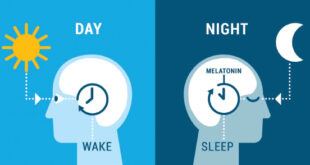In my 35 years of practicing clinical psychology, I encountered a multitude of clients exhibiting difficulties with anxiety. Everyone experiences anxiety at times. Situations such as meeting a deadline, taking a test, having a job interview, or meeting new people often contribute to feelings of nervousness or fear. Mild anxiety can increase a person’s awareness, help them focus on challenging or threatening situations, and cope with them effectively. However, intense anxiety can be overwhelming and interfere with a person’s ability to cope with situations, thereby having a disruptive effect on their daily functioning and leading to an anxiety disorder. With generalized anxiety, a person experiences recurring worries or fears about different things and often exhibits a sense that something bad might happen. A person exhibiting panic disorder fears having a panic attack and tends to avoid situations in which they anticipate one might occur. With social anxiety, a person tends to avoid social situations due to a fear of being negatively evaluated by others. A person exhibiting specific phobias tend to avoid the feared object (for example, certain animals) or situations (for example, flying in an airplane).
NATURE OF ANXIETY
Anxiety consists of physical symptoms (for example, increased heart rate, rapid breathing, choking sensations, nausea, abdominal discomfort, sweating, shakiness, light-headedness), emotional symptoms (for example, nervousness, tension, edginess), thinking symptoms (for example, difficulty concentrating, fear of losing control), and behavioral symptoms (for example, restlessness, avoidance). Anxiety has an adaptive function with respect to signaling a person to avoid situations in which there is a high risk of physical injury or death (for example, evacuating an area in which a hurricane is approaching) or to take action to decrease the risk of such a situation occurring (for example, eating a nutritionally balanced diet and exercising regularly). However, with language, people are able to create threats from situations in which there is a low risk or no risk of injury or death (for example, speaking in front of a group of people, flying in an airplane), thereby resulting in anxiety that can have a disruptive effect on their functioning.
THOUGHTS AND ANXIETY
Interestingly, many of the physical symptoms of anxiety are present when a person experiences excitement or sexual stimulation. These symptoms are not labeled as uncomfortable or threatening in these situations. Many of the people with whom I have worked due to anxiety reported having stopped drinking coffee because it made them anxious. I pointed out that the caffeine in the coffee produced certain physical symptoms (for example, increased heart rate, jitteriness) similar to those with anxiety. This suggests that people with anxiety mislabel the physical symptoms as indicative of anxiety, when they are nothing more than physical symptoms. Furthermore, different people respond differently to the same situation, thereby suggesting that anxiety is largely a person’s reaction to a situation labeled as threatening and is not directly caused by that situation. For example, not everyone experiences anxiety about taking a test. Those with test anxiety view the possibility of failing the test as a threat, thereby respond to the perceived threat with anxiety.
MANAGING ANXIETY
Research has demonstrated that the principles of cognitive-behavior therapy (CBT) have been effective in helping people learn how to manage their anxiety. With CBT, a person can develop an understanding of how their thoughts contribute to their anxiety and related self-defeating patterns of behavior. It has been my experience that people with anxiety often attempt to control the uncomfortable feelings either by avoiding situations that appear to provoke the anxiety or by using distraction techniques (for example, eating, using alcohol, going shopping, using prescription drugs, using deep breathing exercises). Although these attempts to control the anxiety might work to reduce the anxiety, they are only effective temporarily and actually contribute to the anxiety problem continuing on a long-term basis. A more effective approach is based on the principle of acceptance, which consists of describing the symptoms of anxiety when experienced, exhibiting a willingness to make room for them to be present, and focusing on the most important task at the moment. When a person experiences anxiety, they can choose either to focus on the discomfort and attempt to get rid of it (avoidance) or to make decisions that will enable them to move toward their short-term and long-term goals despite the presence of the anxiety. A good example to illustrate this point involves getting a mosquito bite. A mosquito bite results in an itching sensation, and the person experiences the urge to scratch it. While scratching the bite might produce temporary relief, it results in the bite itching even more and for a longer period of time. However, the person also has the choice of acknowledging the the itching sensation which is normal for having the bite, allowing it to be present and ignoring it, and focusing on the most important task at hand. When I stopped smoking cigarettes 42 years ago, I experienced strong urges (discomfort) for a cigarette for several days thereafter. I acknowledged the presence of an urge and the discomfort which was normal for having stopped smoking, noted that just because I wanted a cigarette did not mean I had to have one, focused on my goals of modeling healthy behavior for my children (my first child was due in 2 months) and preserving my own health, and then focused on the task at hand, usually studying since I was still attending graduate school.
A helpful image to use in managing anxiety consists of the “leaves in a stream” metaphor. A person can imagine a flowing stream in the woods with leaves falling in it. They can then objectively describe the symptoms of anxiety and place them on a leaf in the stream. The leaf with the anxiety on it will eventually flow by, with the anxiety dissipating. Once the anxiety has been placed on the leaf in the stream, the person can ignore it, having made a decision consistent with their long-term and short-term goals, and then focus on the task at hand.
NOTE: Some of the material in this article was adapted from. material published by the American Psychological Association.
Dr. Rosenbaum practiced clinical psychology in Mobile, Alabama, for 35 years before moving to Delray Beach in June, 2018. His practice is focused on providing problem solving and skill building, and he assists clients in making life pattern changes with respect to relationships, parenting, depression, anxiety, anger control, and stress management.
Dr. Rosenbaum’s office is located at
1615 S. Congress Avenue – Suite 103 in Delray Beach, and he can be contacted at 251-554-4927.
Check Also
WHAT IS MY CIRCADIAN RHYTHM AND WHY DOES IT MAKE ME FEEL SO “OFF”
By Renee Chillcott, LMHC Have you heard terms such as “biological clock” or “biorhythms”, or …
 South Florida Health and Wellness Magazine Health and Wellness Articles
South Florida Health and Wellness Magazine Health and Wellness Articles




